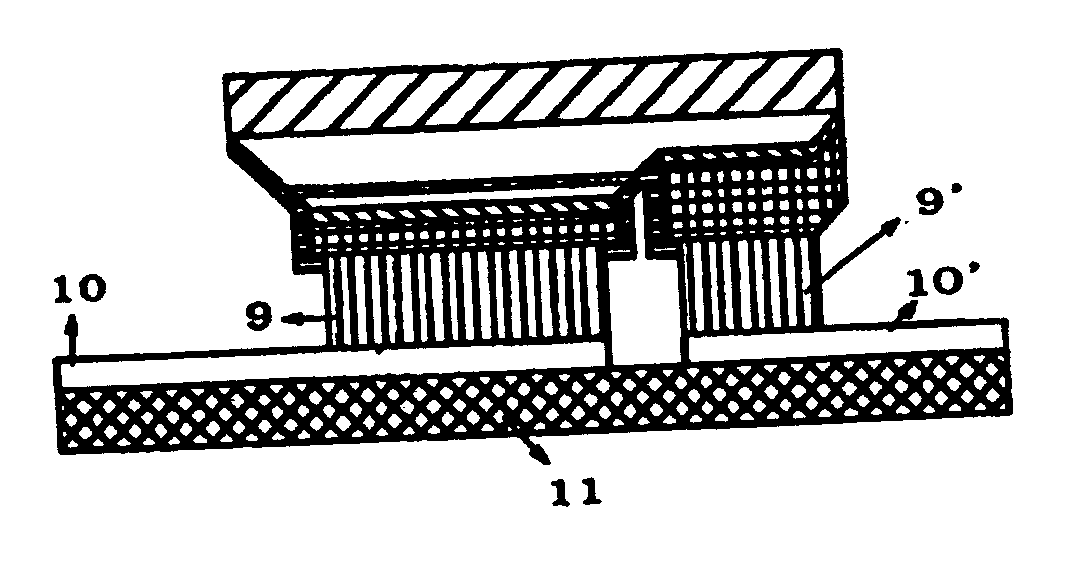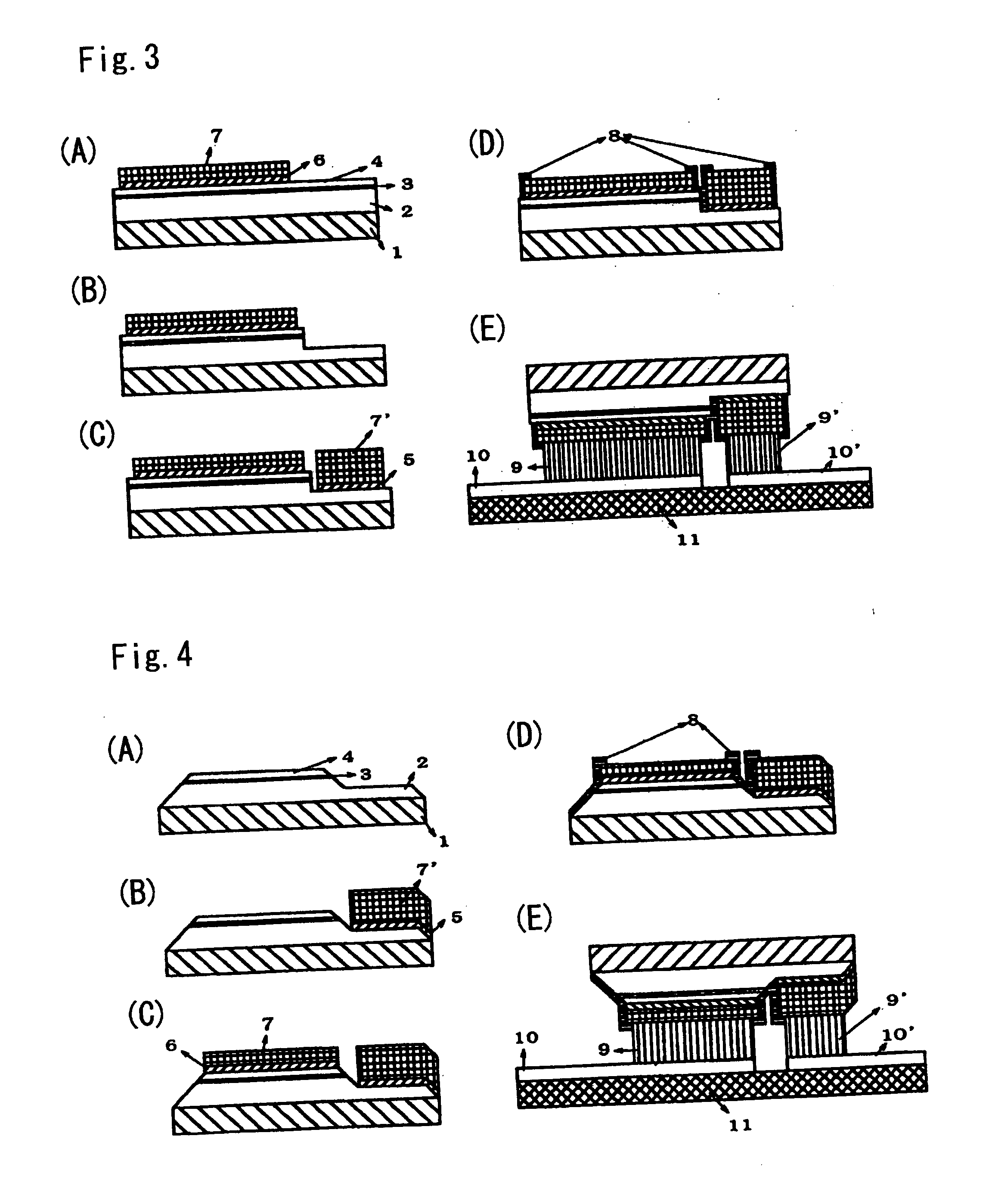Gallium nitride compound semiconductor device and method of manufacturing the same
a gallium nitride and compound semiconductor technology, applied in the direction of printing, printing, other printing apparatus, etc., can solve the problems of imperfect cleaning, surface contamination and oxidation, poor electric characteristics of p-type gan electrodes formed thereon, etc., to prevent deterioration in ohmic characteristics and reflectivity, reduce the total time needed, and reduce the number of times of evaporation
- Summary
- Abstract
- Description
- Claims
- Application Information
AI Technical Summary
Benefits of technology
Problems solved by technology
Method used
Image
Examples
Embodiment Construction
[0060] Hereinafter, detailed description will be given of embodiments of the present invention. The described embodiments of FIGS. 3 and 4 are predicated on a mounting method of flip chip type. It is understood, however, that the present invention is also applicable in the cases of face-up type in which the light output surface is on the semiconductor side. The described embodiments are just a few examples of experiments which the inventors have made for the sake of confirming the effect of the present invention. The present invention must not be considered as limited to the embodiments described herein.
[0061] A device wafer having a silicon (Si) doped n-type GaN layer 2, an active layer 3 made of a gallium nitride aluminum indium compound, and a magnesium (Mg) doped p-type GaN layer 4 via a buffer layer on a sapphire substrate 1 was formed by MOCVD. Then, this wafer was subjected to the following process, which will be described with reference to FIG. 3.
[0062] (1) The wafer was s...
PUM
| Property | Measurement | Unit |
|---|---|---|
| thickness | aaaaa | aaaaa |
| thickness | aaaaa | aaaaa |
| thickness | aaaaa | aaaaa |
Abstract
Description
Claims
Application Information
 Login to View More
Login to View More - R&D
- Intellectual Property
- Life Sciences
- Materials
- Tech Scout
- Unparalleled Data Quality
- Higher Quality Content
- 60% Fewer Hallucinations
Browse by: Latest US Patents, China's latest patents, Technical Efficacy Thesaurus, Application Domain, Technology Topic, Popular Technical Reports.
© 2025 PatSnap. All rights reserved.Legal|Privacy policy|Modern Slavery Act Transparency Statement|Sitemap|About US| Contact US: help@patsnap.com



